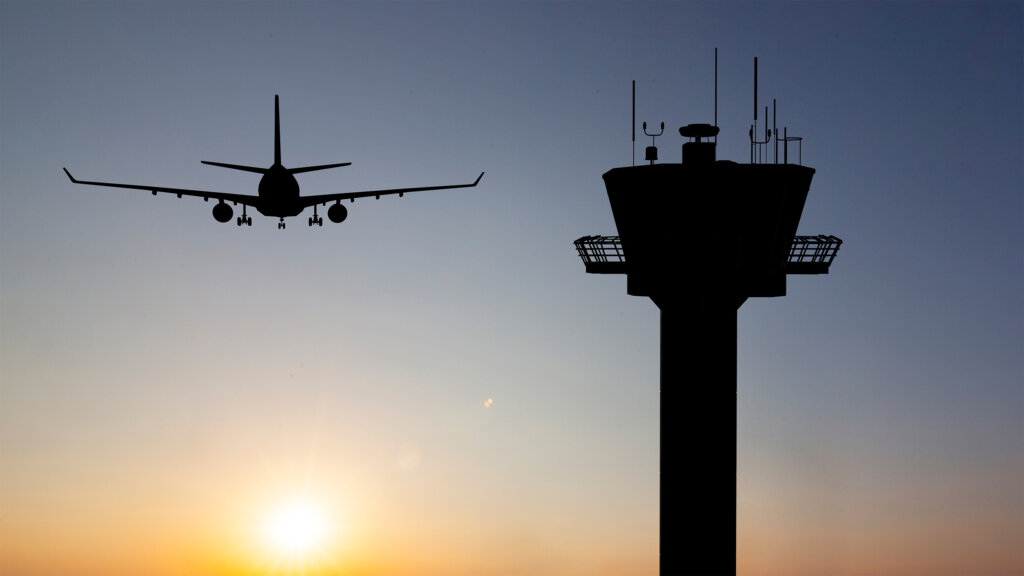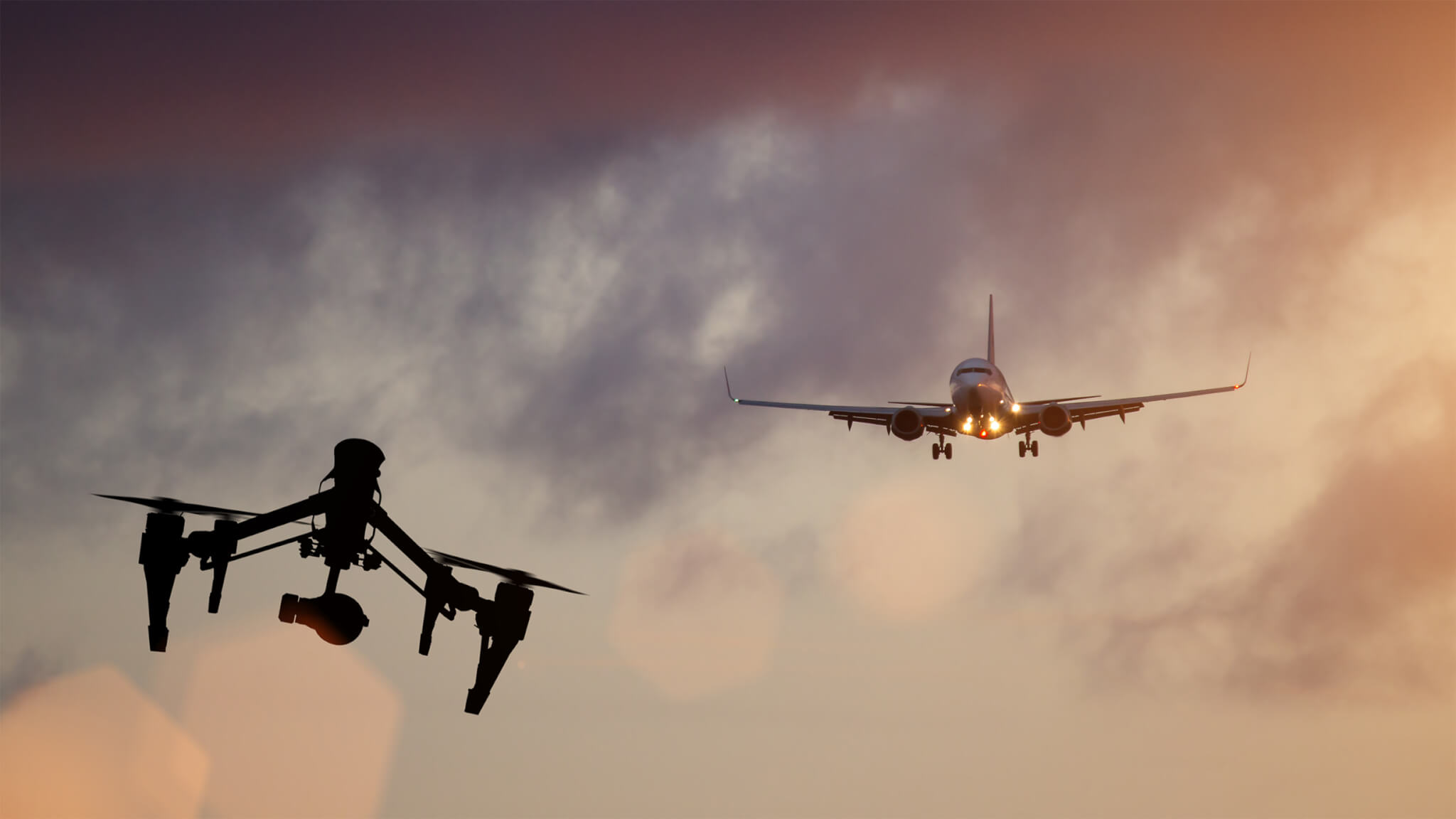A sky is a big place, with plenty of room in it for airplanes, helicopters, and now drones. However, the ‘Big Sky’ does shrink a lot when you look at a congested area. Metropolitan areas where most people live is also where most flying activities happen. The big story with sky sharing is the drone industry; drone usage is expanding exponentially, with the industry poised to break out into a potentially $100 billion industry. What are the risks associated with this growth, and what can we do to mitigate the risk? Airborne Collision Avoidance Systems (ACAS) are one of the best defensive measures you can take to ensure safe flying and provide peace of mind to passengers in the air.
What is an airborne collision avoidance system?
What exactly is an ACAS? The concept is simple: an ACAS is an electronic system intended to keep track of aircraft located in the air. The concept is not new; military and commercial aircraft have used Traffic Collision Avoidance Systems (TCAS) for years, although the technology was traditionally too bulky and expensive for general aviation.
The TCAS was known colloquially as “fishfinders” to the crews who relied on them. TCAS was never designed as the first line of defense against mid-air collisions but instead is a last preventative measure.
The TCAS/ACAS systems onboard human-crewed aircraft are based on radar beacon signals emitted from other aircraft. These are the signals that the transponder emits, and this is an excellent time to nerd out a little bit on the technology.
In aviation, the transponder itself is a broadcasting device only. It broadcasts a coded identifying signal which is unique to that aircraft. But to understand why this is important, we need to back the truck up a little farther.
Human-crewed flight is broadly broken out into two categories of flight rules: visual flight rules and instrument flight rules. Besides aerial applicators (“crop dusters”), powerline patrols, and helicopters, few commercial flights are conducted under Visual Flight Rules (VFR). Conversely, commercial air transportation is almost exclusively conducted under Instrument Flight Rules (IFR).
Every flight conducted under an IFR flight plan is issued a unique transponder identification code known as the “squawk.” The squawk will be a four-digit code unique numerically to that flight, based on departure location, departure direction, and a few other factors. Once the aircraft is airborne, they identify themselves by pressing a button, and their aircraft is illuminated on Air Traffic Control’s (ATC) radar.
VFR flights are controlled differently. Unless the aircraft is flying in controlled airspace, there is no requirement for squawking anything. Unless they are flying within a thirty-mile radius of a major airport (Class B), aircraft operating under VFR do not even need to be equipped with a transponder at all. An interesting side note is that they also do not need to be equipped with a two-way radio for operating at uncontrolled airports. The more you know.
What are the different types of ACAS?
There are a few different types of ACAS, depending on the application. For human-crewed aircraft, the current version of ACAS is ACAS II and TCAS II. These same systems are widely used in large Unmanned Aerial Systems (UAS), mainly used by the military and contractors.
There is no tangible difference between the two types of ACAS listed here besides nomenclature. ACAS II is designed to work as a standalone system, independent of other aircraft navigation systems, the flight management system (FMS), or ATC ground radar.
ACAS provides two distinctly different alert types: Traffic Advisory (TA) and Resolution Advisory (RA).
The TA is an alert letting the pilots know that an aircraft is within a designated area and on a flight path and altitude that pose a threat.
RA is the part of ACAS that makes a recommendation for acting. It will suggest changing course, changing altitude, or both.
Again, this technology is not new; it was pioneered in World War II. It has come a long way, but it is reliant on both aircraft having a transponder and squawking a code. To get to a point where two aircraft flying IFR are on a collision course means that there have been a lot of failures in the system.
VFR flight in uncontrolled airspace is where traffic avoidance is dicey. However, the advent of ADS-B Out is changing the landscape of air traffic location and removing most of the technical thresholds that keep general aviation (GA) from using transponders. To be frank, transponders are dinosaurs. The technology is decades old, and it is also expensive to maintain and replace.
ADS-B is relatively cheap, especially for the benefits it provides. It provides pinpoint information readily available to anyone with a smartphone: traffic location, altitude, and speed. ADS-B Out has been mandatory in the U.S. and Europe for a couple of years now and will ultimately be the technology that phases out archaic radar systems. As a side note, the radar systems that the FAA employs are several decades old. So do with that information what you will.

What are the benefits of an airborne collision avoidance system?
The most significant benefit of an ACAS is avoiding collisions between aircraft. A few years ago, the threat was manned aircraft versus human-crewed aircraft. Pilots are trained to see and avoid one of the most basic and successful tactics to avoid a collision.
Flying IFR changed a lot of that; you cannot see other aircraft in the clouds. ATC is responsible for providing and maintaining separation to aircraft flying IFR.
But what about the small Unmanned Aerial Systems (sUAS) or small drones? Thus far, there have been few options available for commercial drone operators to avoid collision other than the 400-foot ceiling imposed on drone operations. Unfortunately, however, not all airplanes fly above 400 feet.
For instance, if you conduct a LiDAR survey over part of an airport, the airplanes departing and arriving will be well under 400 feet. Or, if you are using a drone for powerline inspection, you may be close to human-crewed aircraft flying low for powerline inspections.
Drones are becoming an invaluable tool in the agriculture industry for surveying fields. Still, during several months out of the year, you will be sharing airspace with aerial applicators who are most certainly flying below a drone’s ceiling!
Iris Automation is leading the effort to provide accurate, reliable ACAS to the commercial drone industry. This is a tremendous advance in the overall safety of flight for drone operations, particularly if and when operating close to known air traffic corridors.
But accidents don’t just happen where traffic is known. Our ACAS, CASIA® X, provides 360° of radial detection, provided by computer vision technology. The FAA is testing the implementation of this technology for its Beyond Visual Line of Sight program, BEYOND.
ACAS/TCAS systems have greatly benefitted the flying community for decades, but they are based on archaic technology well beyond its prime. ADS-B is the future of ACAS technology, and it employs tech that can be mounted in any flying machine. This is the future of safe air travel as our skies continue to be busier and busier.

